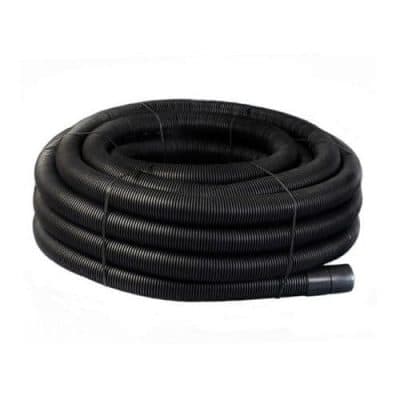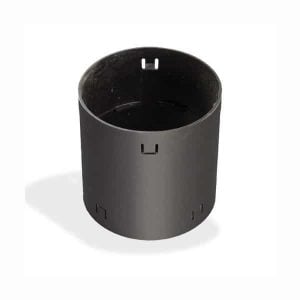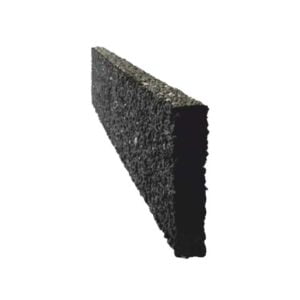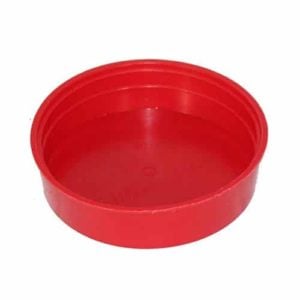No products in the basket.

Land Drainage Pipe Coils – Black
#2 Best Sellerin Land Drainage
Rated 4.82 out of 5 based on 11 customer ratings
100% of buyers gave more than 4 star rating.
From £60.00 Incl. VATFrom £50.00 Excl. VAT
Land Drainage Pipe Coils
 BS 4962
BS 4962
Fast Shipping
All orders are shipped in 1-3 business days.
Secure Checkout
SSL Enabled Secure Checkout
Satisfaction Guarantee
Easy 30-day return policy.
Top Rated Customer Service
We are the highest rated online merchant!
Buy Perforated and Un-perforated Land Drainage Coils in Sizes from 60-160mm – Black
Constructed for the effective management of surface water drainage, our systems are manufactured from HDPE or uPVC and are kitemarked to BS 4962. They are flexible, tough and easy to install – providing drainage for excess water.
Does the colour of a perforated drain pipe matter?
Unlike underground ducting where colour is an indicator of what is inside the duct, colour is irrelevant when it comes to Drainage Pipes. Most surface water underground drainage pipes are manufactured in either a black or a yellow colour.
What is a perforated land drain / land drainage pipes?
‘Land Drainage Pipe’ is the term given to perforated drainage pipes that are used to cure waterlogged areas in gardens or other landscaped areas such as sports fields.
They are pipes that allow water to enter through perforations. The water flows away to a suitable disposal point such as a soakaway, a storm drain or a stream. You should check with the local authority to confirm that your preferred point of outfall is permissible. Land Drainage Pipe Coils shouldn’t be attached without the consent of the Local Authority to a foul or combined drain, and in these circumstances the connection must incorporate a trap.
How to lay a land drainage pipe to move surface water
In waterlogged areas, tightly packed soil particles prevent surface water draining – meaning there is no escape route for the water. By replacing the majority of these soil particles with granular material such as shingle, a route for the water is created, since the gap between each piece of shingle is greater than the gaps between the original soil particles.
Actually laying a land drain pipe to deal with surface water is fairly simple.
First, you should choose your location. You’ll need to make sure that you’re within 2.5 meters of the area where standing water is an issue – and you should always dig your trench allowing for the natural downhill gradient of the surrounding area (this will allow gravity to do the hard work of moving the water).
When a suitable size trench is excavated, you should lay a water-permeable geotextile at the bottom of the trench – but with enough excess to wrap the entire drain trench when full.
Fill the bottom of the trench with a suitable aggregate – until it’s around 1/3rd full. Ideally you should use an aggregate that’s around 1-2cm in size. Next, lay the perforated pipe with the holes facing downwards.
With the pipe seated nicely, you can fill the rest of the trench with aggregate – making sure the geotextile membrane is still sticking out of the drain. When your trench is full (when the gravel is around 10cm from the top of the trench) you can wrap the textile membrane over the full trench – making sure all the aggregate and pipe is covered. This will make sure no debris can enter and clog the drain.
When suitably wrapped, you can cover the drain with turf or finish the job with a decorative aggregate.
| Specifications: | |
| Product width: | 60mm -160mm |
| Product length: | 25m / 50m / 100m |
| Material: | HDPE / uPVC |
| Type: | Land Drainage |
| Pack Size: | 1 |
| Colours: | Black |
| Product: | Land Drainage Pipe |
| Connection: | Push Fit |
| Manufacturing Process: | Extruded |
| Standards: | BS 4962 |
| Weight | N/A |
|---|---|
| Type | Perforated, Solid |
| Size & Length | 60mm x 50m, 60mm x 150m, 80mm x 25m, 80mm x 50m, 80mm x 100m, 100mm x 25m, 100mm x 50m, 100mm x 100m, 160mm x 50m, 110mm x 25m, 110mm x 50m, 160mm x 3m |
| Application | Civil Engineering, Commercial, Industrial, Land Drainage |
| Material | HDPE, uPVC |
Related products
Sale!
Rated 4.00 out of 5
(1)
Sale!



